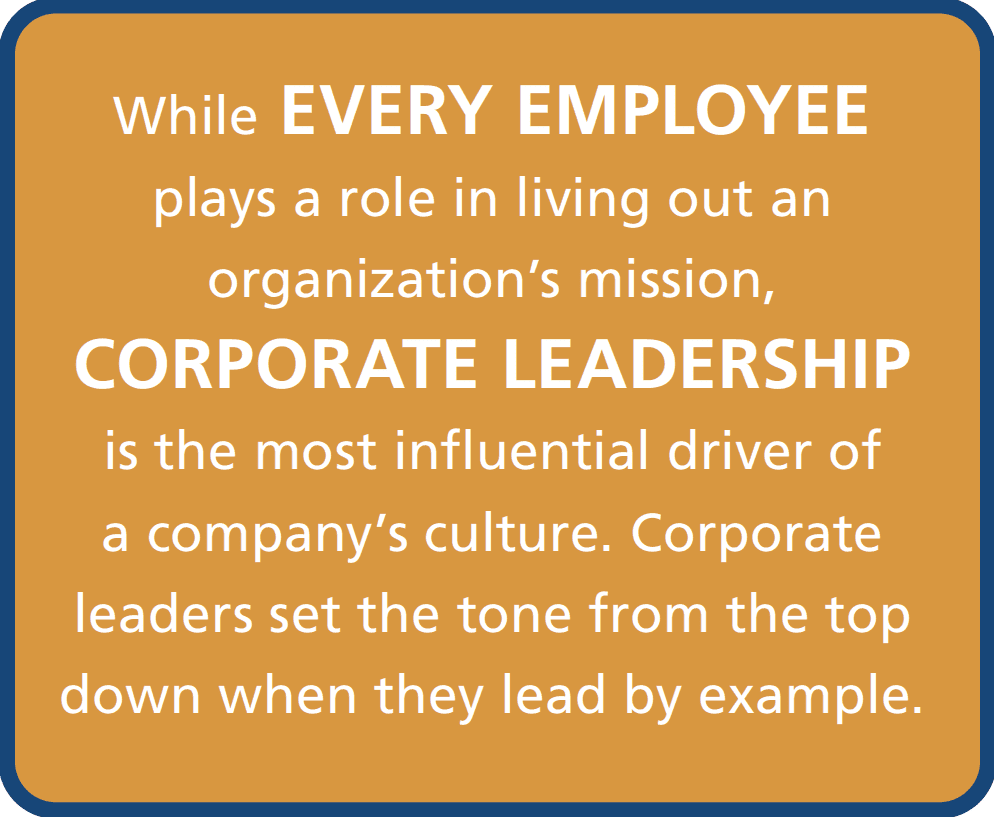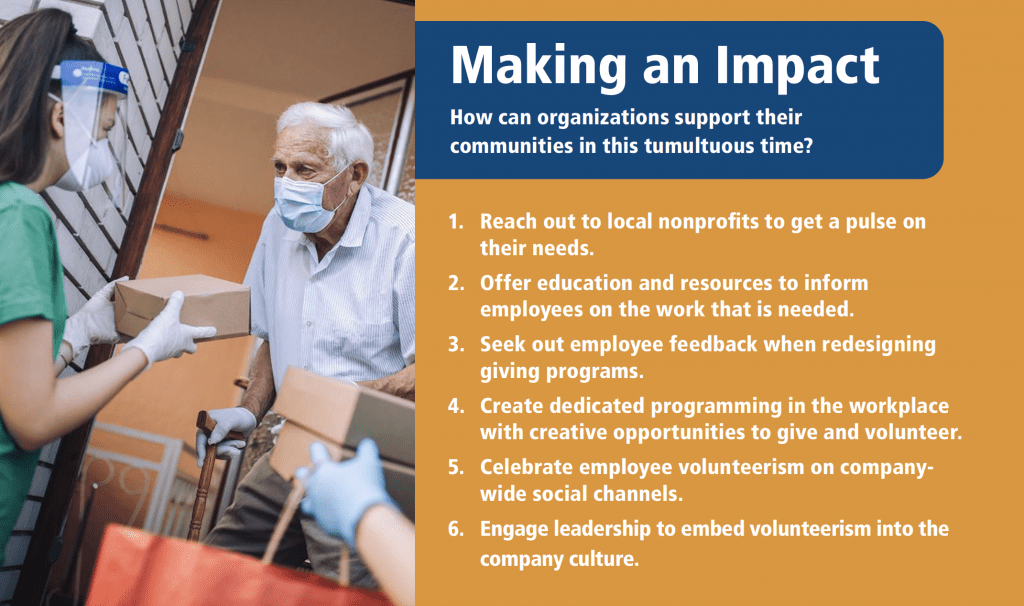Strategies to keep corporate giving and volunteerism a business imperative in a virtual environment.
By Angela Harrell
Over the past year, the ramifications of COVID-19 have forced people across the U.S. into a new way of living. Even now that the first wave of the pandemic has ebbed, there are local communities that continue to suffer in unimaginable ways. In response, mid- to large-sized companies are bolstering their corporate giving efforts to aid their communities’ revival.
Corporate support remains a driver of recovery in the pandemic’s wake, and it also fosters deep employee connections and employee engagement -two challenges that employers have faced amid the shift to remote work. Whether an organization is looking to lift its giving efforts off the ground or restructure its programming to meet current needs, now is the perfect time to re-evaluate giving. As employers work to align their corporate efforts with today’s realities, there are the three key areas to consider when building giving programs that create a long-term and sustainable impact. They include:
- listening to communities to co-create meaningful programs;
- empowering employees to lead efforts effectively; and
- ensuring the C-suite and senior executives are visible and engaged champions.
Listening to Communities
Despite the clear need for charitable support among national and local communities, many large businesses and donors struggle to determine where to start. For some organizations, the pandemic has posed obstacles to longstanding giving programs that rely on in-person volunteer efforts or fundraisers. Other organizations without giving programs in place want to formalize efforts but feel overwhelmed by the undertaking.
The most important step in making a difference is to reach out to nonprofits to get a pulse on their needs. For companies with existing programs, understanding the current challenges and needs of their partners will influence how to customize programs in today’s environment. For organizations without existing partnerships, reaching out to local nonprofit groups that work with the hardest impacted communities helps determine where to effectively allocate time and efforts.
Once companies have assessed their local community’s needs, it’s time to implement learnings into actionable programming. This might involve:
- creating a dedicated time period for an annual event of service or giving (e.g., a dedicated day, week, or month);
- providing virtual opportunities to give and volunteer; and/or
- expanding employee paid volunteer hours to provide extra time to invest in communities.
Creative ideas include virtual game nights with proceeds going to local nonprofits; outdoor meetups for employees to create an item of use (such masks and care packages); or virtual costume parties where employees can dress up to entertain children in hospitals.
Empowering Employees
As workplaces adopt new technologies and strategies to streamline communications in a work-from-home environment, employers should empower their workers with the tools, resources, and benefits available to make a social impact.
One way to do that is by highlighting local nonprofits that are struggling and outline actionable ways employees can support them, whether individually or with colleagues. This information can then be built into weekly digital announcements, such as firm-wide newsletters or staff meetings. Additionally, employers might recommend that employee groups (volunteerism, employee resource groups, or others) consider hosting Zoom roundtables with local nonprofit leaders to educate employees on the challenges they are facing and how to help.
 To encourage an exchange of ideas, employers can set up Zoom huddles between employees and leaders. Within these sessions, business leaders can ask employees for their feedback on redesigned programs and leverage that feedback to enhance future giving initiatives. Aligning employees’ thoughts and suggestions with corporate programming not only does good for the community, but boosts internal engagement and connectivity.
To encourage an exchange of ideas, employers can set up Zoom huddles between employees and leaders. Within these sessions, business leaders can ask employees for their feedback on redesigned programs and leverage that feedback to enhance future giving initiatives. Aligning employees’ thoughts and suggestions with corporate programming not only does good for the community, but boosts internal engagement and connectivity.
Employers can also consider leveraging digital channels to further embed such experiences into the company culture. After company-wide volunteering programs such as national days of service, gathering employees for a virtual video call to reflect on their volunteer experience can build team unity. Through technology and media resources, images and stories of employees’ volunteer experiences can be shared to raise excitement and momentum around giving.
Engaging Champions
While every employee plays a role in living out an organization’s mission, corporate leadership is the most influential driver of a company’s culture. Corporate leaders set the tone from the top down when they lead by example. As such, leadership is paramount to the success of volunteer programs.
In order for community investment to be embedded in a company’s values, it must be led from the front. To bring these values to life and create a workplace community built on principles of giving, collaboration, and teamwork, HR leaders need to engage the executive leadership team and their direct reports. Employers might think about assigning each leader activities to sponsor and offering them a communication toolkit to help spread the word about the events. Track and measure participation within the business or function they lead and set goals for participation.
For long-term community engagement, consider starting an executive nonprofit board service program. Leaders can be placed on the boards of nonprofits or organizations with missions that align with a company’s values. Meet with leaders to gauge their passions and interests and determine if there is an upcoming opportunity that aligns with their goals.
To drive long-term impact, make the unwavering commitment to community a part of a company’s ethos. Particularly during these uncertain times, an organization’s corporate values enhance the way employees identify with their organization and build camaraderie that encourages employees to perform at their best.
The pandemic has provided a moment for leaders to reexamine their organizations’ employee volunteerism and giving programs to maximize impact on the communities they serve. Though there is no one-size-fits-all approach to giving, engage with local nonprofits to assess acute needs, empower employees to lead initiatives, and ensure senior leaders are visible and engaged champions. While there are many unknowns around the future of the pandemic, it has made one thing clear: corporate giving is a business imperative.
Angela Harrell is senior vice president and chief diversity and corporate responsibility officer at Voya Financial, and president of the Voya Foundation.















